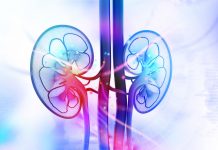A pharmacy is much like a grocery store, where regular shoppers will visit daily. It’s one of the only points of physical contact that a lot of people have with the outside world, so pharmacy workers are in a great position to help those feeling a little lost in their community.
Earlier in the year, Pharmacy Guild National President George Tambassis spoke about the Bridging the Gap between Physical and Mental Illness in Community Pharmacy (PharMIbridge) randomised controlled trial.
“As the most accessible of all health professionals, community pharmacists are often the first people mental health patients turn to for help and advice,” he says.
“Being stir crazy … I think you could argue this is a biological response that motivates us to reconnect with others, just like hunger and thirst motivates us to seek out food and water,” says Dr Terry Kupers, a faculty member at the Wright Institute private graduate school in Berkeley, California.
Stir crazy looks like:
- Restlessness.
- Lethargy – wanting to sleep all day.
- Sadness or depression/withdrawn.
- Difficulties concentrating.
- Lack of patience.
- Decreased motivation.
- Changes in weight.
- Inability to cope with stress.
Knowing the signs of someone undergoing mental stress is a crucial first step to ensuring you can provide the best help possible.
“Pharmacists [and pharmacy assistants] serve as a critical element in the healthcare team, working with patients to manage their conditions, often as a conduit to other services, an advocate for the person, or to lend a compassionate ear,” says Mr Tambassis.
To read the feature as it appears in this month’s issue of Retail Pharmacy Assistants magazine, visit: rpassistants.com.au/magazines






